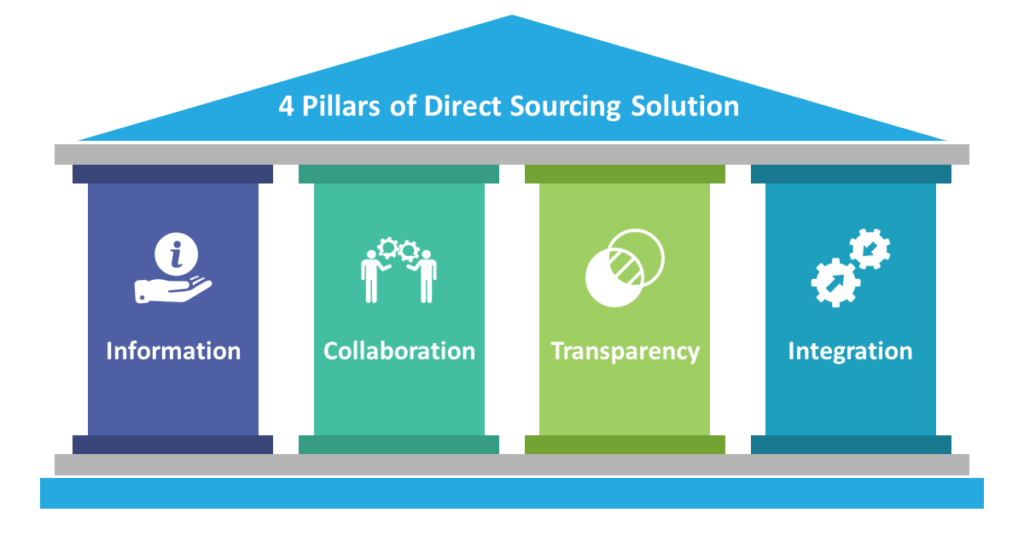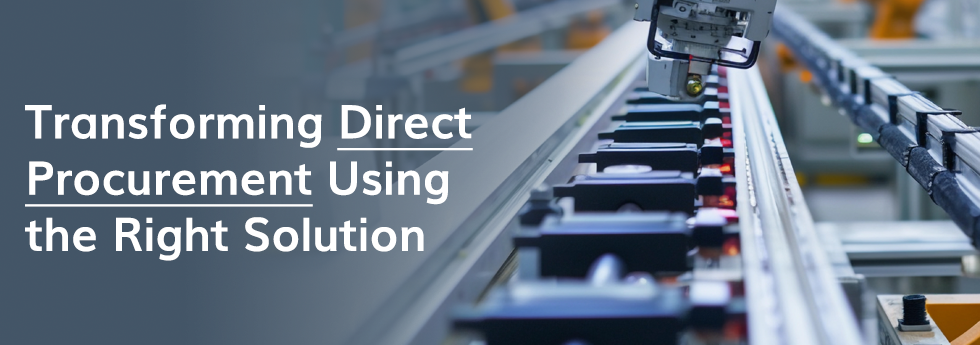Couple of decades ago, every company was very dependent on floppy disks to store and transfer data. Now, floppy disks are extinct. Kids in school these days aren’t even aware of such a technology. Something, which seemed so vital, was quickly replaced and forgotten. That’s the ultimate threat faced by a legacy technology – to be replaced. ERP is a legacy technology that is very much vital to the functioning of a business. Moving from legacy technology and adopting an emerging technology can be daunting for companies, but it is very much a necessity. ERP is necessary to manage a company’s business processes like supply chain management or financial management. But is it enough to provide the edge?
In my previous blog, I had discussed how the supply chain is becoming complex and rapidly evolving with changing consumer needs. ERP systems can handle the breadth of business processes, but do they offer depth? In a world where everything is completely customized and catering to the customer’s taste, can companies afford not to possess products that offer deep functional capability for their operations? Procurement software would provide the required in-depth functionality to the sourcing process and produce optimal results. With maturing technology, now software products are well-defined to fit the needs each industry. Direct procurement organizations cannot meet their complex strategic procurement needs using just their ERP system, which can handle only transactional procurement. They need to look for a Direct Sourcing software that would meet their requirements and make the procurement process much more efficient. In this blog, let’s see how a Direct Materials Procurement Solution can make the direct spend management more efficient and contribute to long-term business value using Strategic Sourcing.
Table of Contents
ToggleThe Outside-in Strategy
Amazon’s vision to be ‘the earth’s most customer-centric’ clearly shows the power held by customers. Amazon had taken several steps towards this vision, like item-level collaborative filtering that improves their product recommendations. One of their recent moves is to transport goods to the nearest warehouse as soon as the customers had added them to their cart. The shipping time reduces, motivating the customers to buy the product at once. The instant ability of Amazon to track the data and immediately convert it into action makes them a master of supply chain management.
Companies are shaping their business model according to the customer needs. This outside-in strategy is hard to implement with a relatively rigid technology like ERP. Forecasting and predicting trends based on historical data has become a bottleneck in the fast-paced market. Concurrent changes have to be immediately tracked and responded to. Companies must find alternative and innovative ways to stay agile and efficient. Procurement solutions would allow companies to adapt to the new normal. Cloud technology simplifying data handling across the company followed by AI/ML that would allow automation and data-driven decision making in the procurement process. Procurement software products have the flexibility and capability to handle the needs of the complex sourcing supply chains of today.
What exactly is a Direct Sourcing Solution?
Direct procurement might sound simple, as it is the sourcing of materials that ultimately flow to customers as components of the end products. However, it is an extremely complex domain and there is a lot at stake for the organisation in terms of the quality, cost and timeliness of the final product. Direct procurement helps in sustaining the inbound supply chain of the organization by managing supplier relationship, sourcing and cost optimization. A Direct Sourcing software solution should satisfy the traditional procurement objectives such as continuity of supply, spend analysis and purchase orders. It must also integrate forecasting for order quantities that can account for ongoing changes in the market. It should possess the technology and information sources that would accommodate the variations in third-party relationships, processes and data integration, and risk associated with the complex market.
Four Pillars of Direct Sourcing Solution
Risk is innately present in today’s supply chain. If an organization is facing no risk related losses, then possibly they must have an under-optimized and poorly managed supply chain to even be considered competitive. Building and defending a competitive edge in supply chain requires for the company to be constantly optimizing it with the latest technologies available. A typical direct procurement software should have transparency, integration, collaboration and information that can generate more value to the company.
Transparency:
Companies require a sourcing solution that would provide end-to-end insights into the processes. State-of-art analytics that offer real-time understanding of the sourcing processes is required. It would assess the information collected from suppliers and companies for the optimization of product lifecycle. The software should be able to track the data collected and perform analytics on PPV (Purchase Price Variance), BOM (Bill of Material) and supplier information to formulate and update their strategic sourcing process
Collaboration:
Superior supplier management is absolutely necessary for an organization to succeed in optimizing Direct Sourcing. The solution should have an interface that would allow the several suppliers to reach the companies with one information effort. It includes compliance monitoring of the supplier partners and strong contract management. Companies must have strong relationship with key suppliers throughout the product lifecycle to minimize risk and optimize value.
Integration:
In Direct Sourcing, there needs to be a tight interaction between the suppliers and the companies. Any change whether in the demand planning or engineering design of the product or quality of supply needs to be instantaneously communicated to them. It should also have connectivity to other software used by the company including Product Lifecycle Management (PLM), ERP, MRP etc., to support other business processes. It would help in seamless transference of information between the systems, avoiding errors or delays, and accelerate time to market.
Information:
Adequate information such as cost breakdown of the raw materials, supplier’s product categories, supply quantity, Part Cost Breakdown, Volume Pricing and PPV is of extreme importance to a Direct Sourcing software. A solution which can consolidate demand across various products across the organization enables buyers to have better bargaining power and strategize their sourcing process. It also includes the most valuable data of the organization which is the direct spend. Apart from having the in-depth and wide information collected from suppliers, other systems and market, a Direct Sourcing solution should also have the facility to accommodate any change in the information immediately in real-time.

The Need For A Direct Procurement Solution
Supplier’s ability to deliver goods on time with proper compliance, adhering to the stated business processes and expectations, drives the company’s performance in Direct Sourcing. When a company’s Direct Sourcing isn’t efficient, it would create a ripple effect affecting the entire supply chain with increasing amplitude in every next step. Direct Sourcing requires a more focused approach compared to in Direct Sourcing. . Medical device manufacturing companies experienced a huge spike in demand due to COVID. Hospitals and medical device companies re-engineered the ventilator’s design, allowing one ventilator to tend to multiple patients. Even with this innovation, companies struggled to meet the demand. They weren’t able to integrate the new design in their Direct Sourcing processes easily. In the Indian Automotive Industry, there was a sudden shift to adopt BS VI norms, forcing companies to alter the entire engine design of the vehicles. OEMs struggled to collaborate with the limited suppliers who were producing the required components to satisfy Bharat Stage VI emission norms.
Several disruptive events increasing over the years have made the supply chain vulnerable. These could be non-economic shocks such as climatic catastrophes or economic shocks such as Brexit that impact on the supply chain cost and performance. Moreover, companies are in constant process of revamping their product design to satisfy the changing consumer’s needs. In addition to this, companies are facing intense competition in their respective industries. Organizations have to become more agile and make their supply chain resilient to survive and be competitive. Companies have to bring this change from the point of source for the supply chain – Procurement. A Direct Sourcing software would secure a company’s position in the industry and give them a competitive edge. It would help in streamlining the business processes even in a volatile market and capture the value in supply chain.
MeRLIN is a Strategic Sourcing software product that has unique and excellent Direct Sourcing features. PLM interface, Engineering Change Management, BOM Management and Catalog Management with advanced analytics makes it an ideal Direct Sourcing software that would transform the procurement process. Its ability to seamlessly integrate with ERPs and enhance collaboration with suppliers providing in-depth visibility across the sourcing process would satisfy the procurement team’s objectives and help them keep in pace with evolving market conditions.



